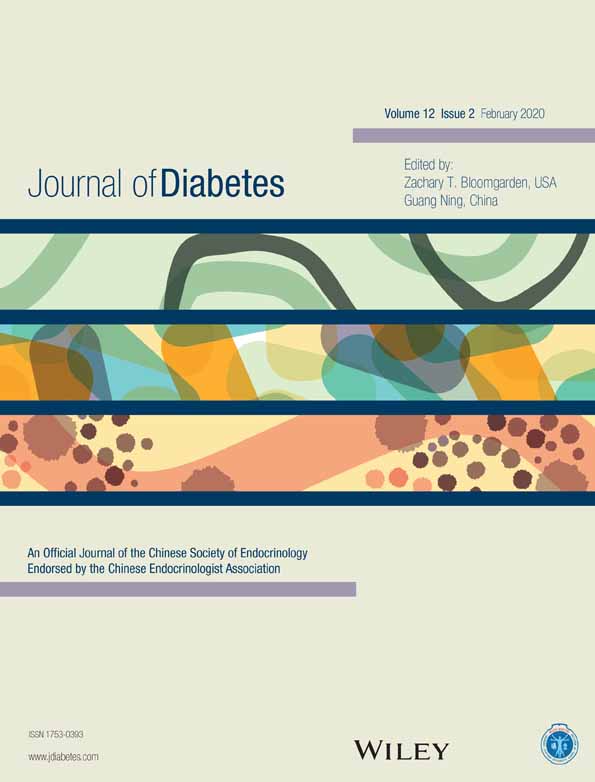Which is the worst risk factor for the long-term clinical outcome? Comparison of long-term clinical outcomes between antecedent hypertension and diabetes mellitus in South Korean acute myocardial infarction patients after stent implantation
长期临床结局最糟糕的风险因素是什么?韩国高血压与糖尿病患者因急性心肌梗死接受支架置入术后的长期临床结局比较
Funding information: Korea Centers for Disease Control and Prevention, Grant/Award Number: 2016-ER6304-02
Abstract
enBackground
Hypertension and diabetes mellitus (DM) are major risk factors for the cardiovascular disease. In this retrospective cohort study, we compared the long-term clinical outcomes between antecedent hypertension and DM in acute myocardial infarction (AMI) patients after stent implantation.
Methods
A total of 32 938 eligible AMI patients were enrolled and divided into the four groups according to the presence or absence of hypertension and DM (hypertension −/DM −[group A, 13 773 patients], hypertension +/DM −[group B, 10 395 patients], hypertension −/DM + [group C, 3050 patients], and hypertension +/DM + [group D, 5720 patients]). The clinical endpoint was the cumulative incidence of major adverse cardiac events (MACEs) defined as all-cause death, recurrent myocardial infarction (Re-MI) and any repeat revascularization during the 2-year follow-up period.
Results
After adjustment, the cumulative incidence of MACEs (adjusted hazard ratio [aHR], 1.232; 95% confidence interval [CI], 0.982-1.567; P = .071), all-cause death, and e-MI Re-MI were similar between the group B and C. However, the cumulative incidences of any repeat revascularization (aHR, 1.438; 95% CI, 1.062-1.997; P = .007), target lesion revascularization (TLR) (aHR, 2.467; 95% CI, 1.552-3.922; P < .001), and target vessel revascularization (TVR) (aHR, 1.671; 95% CI, 1.256-2.222; P < .001) were significantly higher in group C compared with group B.
Conclusions
This large number of a nonrandomized and multicenter cohort study clearly demonstrated the detrimental impacts of the hypertension and diabetes on long-term clinical outcomes. Moreover, higher incidence of repeat revascularization after PCI in diabetic AMI patients a major concern until recently.
摘要
zh背景
高血压和糖尿病(diabetes mellitus, DM)是心血管疾病的主要危险因素。在这项回顾性队列研究中, 我们比较了高血压和DM患者在因急性心肌梗死(acute myocardial infarction, AMI)接受支架置入术后的长期临床结局。
方法
共入选了32 938名符合条件的AMI患者, 根据有无高血压和DM分为4组(高血压−/DM−[A组, 13 773例患者];高血压+/DM−[B组, 10 395例患者];高血压−/DM+[C组, 3050例患者];以及高血压+/DM+[D组, 5720例患者])。临床终点为2年随访期间的主要不良心血管事件[MACEs, 定义全因死亡、复发性心肌梗死(Re-MI)和任何再次血运重建术]的累计发生率。
结果
经过校正后, 发现B组C组之间的MACEs(校正后风险比[aHR], 1.232;95%置信区间[CI], 0.982-1.567;P=0.071)、全因死亡和e-MI Re-MI的累积发生率均相似。然而, 与B组相比, C组的任何再次血运重建术(aHR, 1.438;95% CI, 1.062-1.997;P=0.007)、靶病变血运重建术(target lesion revascularization, TLR)(aHR, 2.467;95% CI, 1.552-3.922;P<0.001)以及靶血管血运重建术(target vessel revascularization, TVR)(aHR, 1.671;95% CI, 1.256-2.222;P<0.001)的累积发生率均显著更高。
结论
这项大型的非随机、多中心队列研究明确显示了高血压和糖尿病对长期临床结局的不利影响。此外, 糖尿病AMI患者接受PCI术后需要再次血运重建术的可能性更高, 这一点直到最近才引起关注。
CONFLICT OF INTEREST
The authors declare no potential conflicts of interest.




